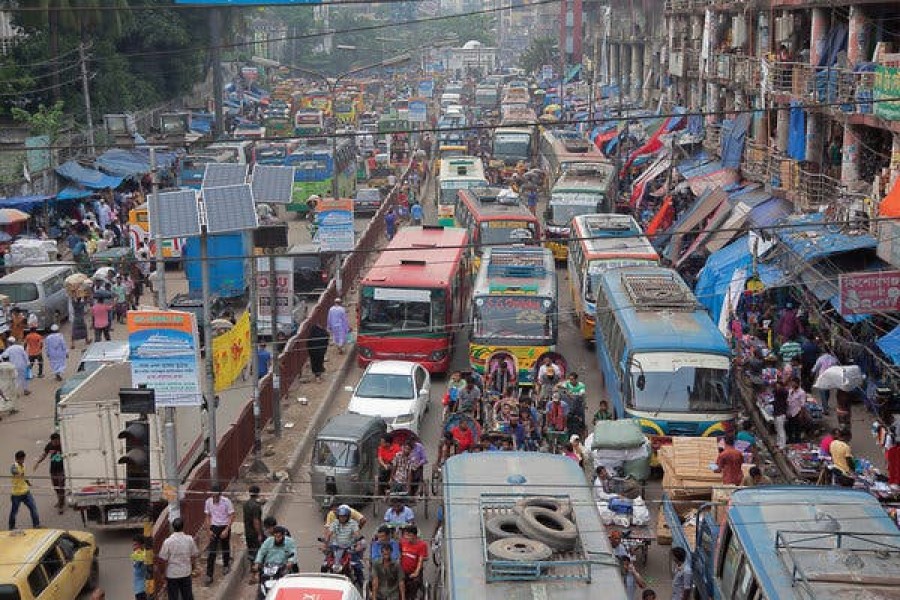The Uber taxiand ride sharing services are yet to receive the authorities' nod to resume their operation in Dhaka; although many restrictions have been lifted in the post-shutdown period. The general commuters are facing immense trouble in moving in the city. Many find the reasons for non-availability of hired vehicle shrouded in mystery. Apart from the difficulty in moving in the capital, the absence of these services has led to worries among manyCovid-19-wary people. The Uber taxi services are mainly utilisedby the relatively solvent people. They love to commute and move about in the capital exclusively on cars. Moreover, this hired mode of transport keeps one free of the complications ofre-appointing the drivers after the shutdown.
Many car owners are reluctant to appoint them unless they complete their 14-day quarantine. On the other hand, due to their speed a lot of other people are found to be increasingly opting forpillion riding on hired motorbikes.
Now that these services remain suspended for an indefinite period, a number of theUber passengers are seen boarding buses. They take the attempt after watching the buses' rate of compliance with the rules specified by the authorities. As they have found, a large percentage of the local and mid-distance buses appear to be tolerably safe for travel - at least on short distances.
A fortnight after the withdrawal of the countrywide shutdown, buses on a number of the city routes keep the helpers busy in disinfection tasks. The helpers start with sprayingsanitisers on the hands of passengers at the gate as they board the vehicle. Even in rush hour, the buses seem to be quite roomy. Of the total seats, only half are allowed to be used by the passengers. It means only one person can sit on a two-passenger accommodation. And two commuters can use a three-passenger seat. None is allowed to travel standing by clutching at the horizontal rod.
All this is, obviously, meant for ensuring physical distance. The spectacle effuses an air of confidence on the part of the passengers. The new arrangement is highly reassuring for the travellers.
The tempos or legunas have also come out on their old routes, apparently on being promise-bound to comply with the corona prevention requirements. They have a different clientele. Hundreds of middle and lower-middle class passengers travel on a few busy but vital routes used by these tempos. Normally, they include students, small traders, and job holders at private firms. These improvised modes of transport, notorious for their ramshackle condition and employing of child labour, have also undergone radical transformation. Instead of 12 passengers they now carry six, with no helpers, three on each long seat on opposite sides.
It means the owners are maintaining physical distance of sorts, like seen on the buses. In spite of taking fares double the previous ones, passengers are not making any stir. It means they are ready to pay extra charges provided the service remains free of the deadly coronavirus. Bus fares have also increased significantly.With the hygiene-related measures in place, the passengers may not complain about the fare hike. But all this needs monitoring.
One hopes the preventive measures taken by the bus and other public transport owners targeting passengers at risk of being infected will take hold. Many passengers are fearful of the steps fizzling out after some time. The worry is not unfounded. With the relevant authorities coming to grips with the corona prevalence in the country, the transport owners might take the new condition as being normal; yet the now-heartening steps are feared to revert to their earlier fraught state. Few are prepared to become wary again while travelling by local buses and tempos.


